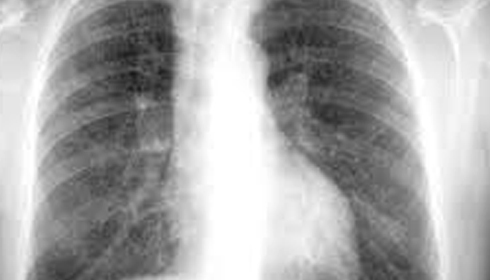
Silicosis Epidemic Affecting Countertop Workers Amid Safety Concerns: Report
A rising health crisis is unfolding among workers in the countertop manufacturing industry, particularly those crafting engineered stone surfaces. According to a study presented at the Radiological Society of North America’s (RSNA) annual meeting, a growing number of these workers are being diagnosed with silicosis, a severe and often fatal lung disease. The findings underscore an urgent need for improved safety measures and heightened awareness to combat this emerging epidemic.
Silicosis, caused by inhaling crystalline silica dust, is a progressive disease that impairs lung function and leaves patients vulnerable to respiratory failure, chronic obstructive pulmonary disease (COPD), autoimmune disorders, and lung cancer. Workers in industries such as construction and coal mining have historically been at risk, but the disease is now reemerging among those who shape and polish engineered stone countertops, which contain significantly higher levels of silica compared to natural stone.
“This is a new and emerging epidemic, and we must increase awareness of this disease process so we can avoid delays in diagnosis and treatment for our patients,” said Dr. Sundus Lateef, lead author of the study and a diagnostic radiology resident at the University of California, Los Angeles.
Dr. Lateef and her team conducted their research at a large urban safety-net hospital near Los Angeles, focusing on 55 countertop workers diagnosed with silicosis through CT scans and pulmonary function tests. The preliminary analysis of 21 workers revealed that all were male, Hispanic, and had a median age of 43 years. They had an average exposure of 18 years to silica dust and presented with advanced symptoms, including chronic cough and shortness of breath.
Alarmingly, silicosis was misdiagnosed in many cases. Only 19% of primary care clinicians identified the disease during the first patient encounter, while radiologists identified it in 33% of cases. Misdiagnoses often pointed to infections or other respiratory conditions. “Silicosis may present with atypical features that may catch radiologists off guard in practice regions where silicosis is not traditionally diagnosed, which can lead to delays in diagnosis,” Dr. Lateef explained.
Compounding the issue, many workers are Spanish-speaking Latino immigrants, a demographic particularly vulnerable to unsafe workplace conditions. “There is a critical lack of recognition of exposure and screening for workers in the engineered stone manufacturing industry,” Dr. Lateef emphasized. The study highlighted a disturbing reality: over half of inspected workplaces in California exceed permissible exposure limits for silica dust, suggesting systemic lapses in workplace safety.
Engineered stone countertops, prized for their durability and aesthetic appeal, are manufactured by combining quartz aggregate with a resin binder. The grinding, cutting, and polishing processes release fine silica dust into the air, exposing workers to high concentrations of the hazardous material. Despite the availability of preventive measures such as wet cutting techniques, proper ventilation, and respiratory protective equipment, compliance remains inconsistent.
“These new cases of silicosis demonstrate radiology findings different from the historical disease, and doctors may not be aware of the diagnosis when they see these images,” Dr. Lateef said, emphasizing the need for updated training among healthcare providers. Her team is advocating for earlier screening protocols and systemic reforms to protect at-risk workers.
The researchers are also contributing to the California Artificial Stone and Silicosis (CASS) Project, which focuses on promoting respiratory health in the state’s countertop fabrication industry. The initiative aims to improve workplace conditions and advocate for vulnerable workers, many of whom face significant barriers to accessing healthcare and safe working environments.
Silicosis is entirely preventable when proper safety measures are in place. Yet, for many workers in this industry, particularly immigrant laborers, the lack of regulation and oversight perpetuates dangerous exposure. Advocacy groups and public health experts are calling for stricter enforcement of occupational safety standards and a stronger push for early detection programs.
The study’s findings raise pressing questions about the cost of modern conveniences like engineered stone countertops and the human toll associated with their production. As Dr. Lateef noted, addressing this crisis requires a collaborative approach encompassing government regulation, employer accountability, healthcare advocacy, and public awareness.
By shedding light on this issue, the RSNA study not only highlights a growing occupational hazard but also serves as a clarion call for systemic change. Without immediate intervention, the epidemic of silicosis among countertop workers may continue to grow unchecked, endangering the lives and livelihoods of thousands.